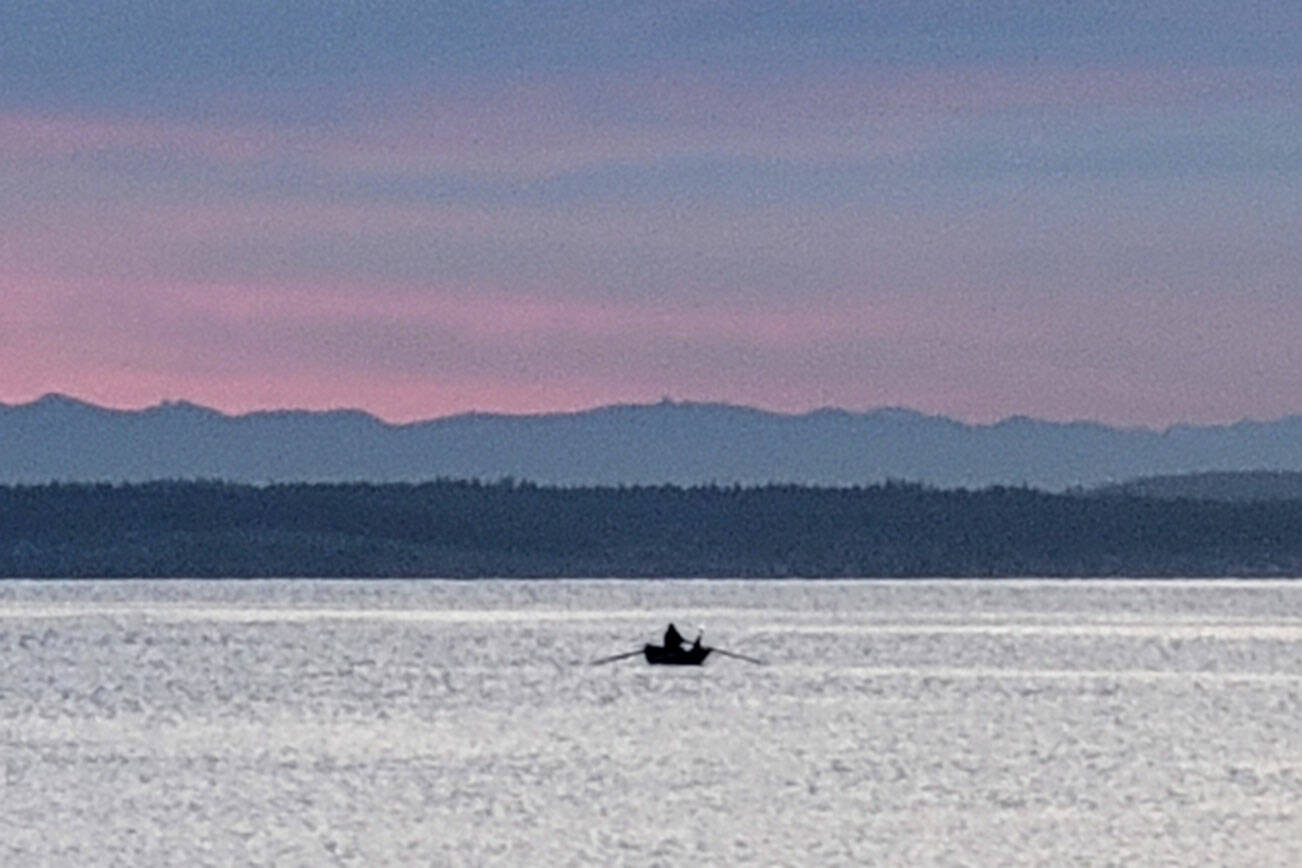Susan Ann of Poulsbo has been an avid rower since college, but it was the death of her beloved dog that inspired her to tackle the most difficult rowing event she’d ever done — the Salish 100.
When her labradoodle Mistyrose was severely hurt some years ago after what she called an “unexpected accident,” she was told the best option would be to put her down. Ann has a background in nursing and decided to give Mistyrose a second chance at life by intensively rehabbing her for the next few years until she eventually passed away.
“I saw it in her eyes, and she deserved a chance,” Ann said. “Basically, I rehabbed her single-handedly. It took months, but eventually, she was standing and walking. She had a good life for another 3.5 years after that, which was a miracle. All the odds were against her.”
It was the fight and perseverance of Mistyrose that inspired Ann to take on the Salish 100, which occurred July 20-27. Each summer, the rowing event is held with various fleets cruising from Olympia to Port Townsend in a week, with overnight stays along the way. Ann said most vessels were larger sailboats or boats that could hold multiple people. So it was a surprise to many when Ann decided to conquer the 100-mile trip in her small rowboat named “Misty Rows,” an ode to her former furry companion.
“They looked at me like I was crazy,” Ann said. “I named the boat after her so she’s always with me in spirit.”
Along the way, skippers experience everything the Salish Sea has to offer such as currents racing through narrow channels, tide rips, sandbars, rocky shores, changing wind conditions and encounters with wildlife. Since Ann’s 14-foot-long rowboat was not meant for racing and only seats one, the event was more difficult for her than those in larger vessels. But that was something Ann wanted to embrace in honor of Mistyrose, who had to overcome many challenges toward the end of her life.
“Really, what you’re racing is Mother Nature,” Ann said. “I had to be extremely mindful of the tides, winds and currents and make those adjustments. As it progressed, I quickly learned that I had to kind of branch off on my own because I had to follow the tides, and everyone else was following the wind.
“It took all the strength I had during a couple points,” she continued. “There were a few days that were pretty tough. The south Sound was a lot more calm than the north Sound. It took a lot of mental courage and stamina.”
The journey
Ann and all the other skippers started the Salish 100 at Swantown Marina in Olympia. The first night the group stopped at Henderson Inlet in Thurston County, and the boats could only use anchors since there was no dock. While all the other boats had cabins or a designated area to sleep in, Ann had to pull her boat up to a local beach where she pitched a tent.
The second day they kept heading north to a private dock in Longbranch where Ann camped on the dock. The following day is when conditions began to get tougher as Ann went through open waters near the Tacoma Narrows Bridge en route to Gig Harbor. “That was an unknown for me; it’s a huge waterway,” she said. “There’s a lot of strong currents.”
The next day led them through Colvos Passage to Blake Island, with conditions only getting worse. Kingston was the next destination as Ann dealt with more open waters and had to strategically avoid the ferry routes. “That was a pretty long day,” she said. “If you end up getting stuck going against a tide you can’t outrun and a ferry is coming, you’re in big trouble.”
When she docked in Kingston, her son met up with her to give some words of encouragement and to see how she was holding up. The final stretch of the journey would prove to be the toughest as she headed for Port Ludlow the next day. She intentionally left early in the morning before the sailboats since her rowboat didn’t move as fast. What she didn’t know was all the skippers had talked about changing their plans due to the incoming weather while she was sleeping the night before.
“It doesn’t look like much when you look on a map but I can tell you it’s a lot,” Ann said. “They had all learned the weather was going to be changing. When I left the weather looked pretty good but what I didn’t know was how much it was going to change.
“It took a lot longer to get to Foulweather Bluff than I expected. Because it took so long, I hit it right when the north wind came about. It was scary. In theory, I shouldn’t have been out there. It was like being in a washing machine. My little boat even caught air a few times. All my energy was spent when I got to Port Ludlow.”
After completing the most difficult day of rowing in her life, Ann still had one more day to complete the journey to Port Townsend, which she admitted she was dreading. “Because I had my goal, that was the only way I was able to push through,” she said.
Luckily, conditions were much better. She passed some of the tribal canoes that were part of the Paddle to Muckleshoot. Upon reaching Port Townsend, Ann was completely exhausted but proud of herself for pushing her boundaries to accomplish a goal through love, hope and perseverance—something Mistyrose did in her final years.
“I really did get that sense of peace that people are looking for at the end of it,” she concluded.


